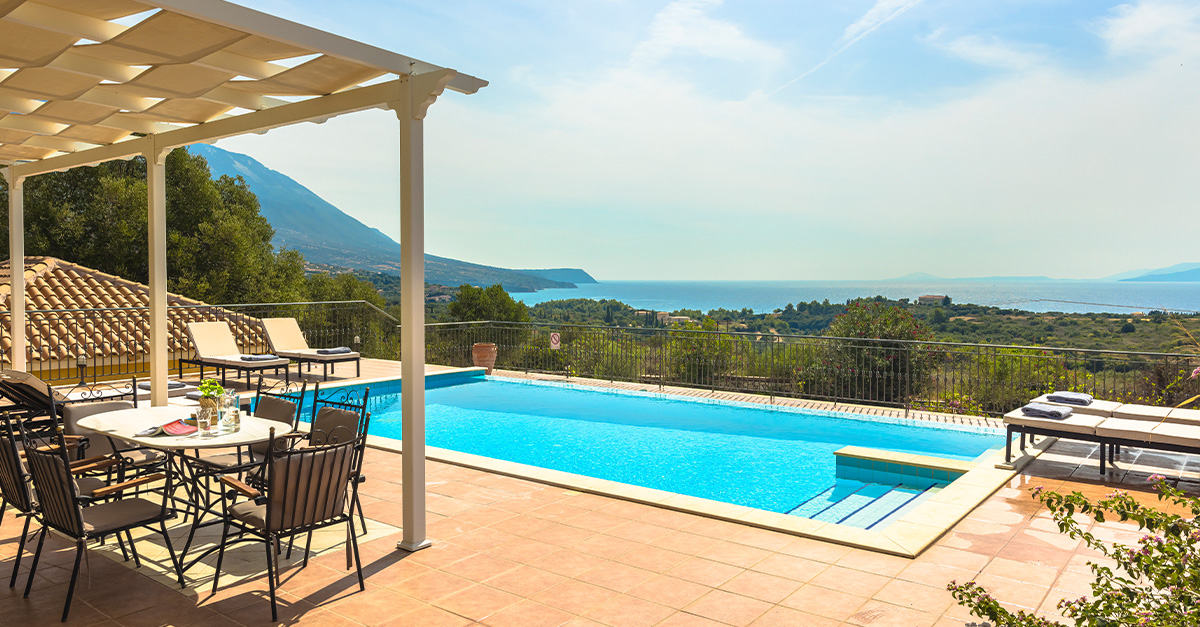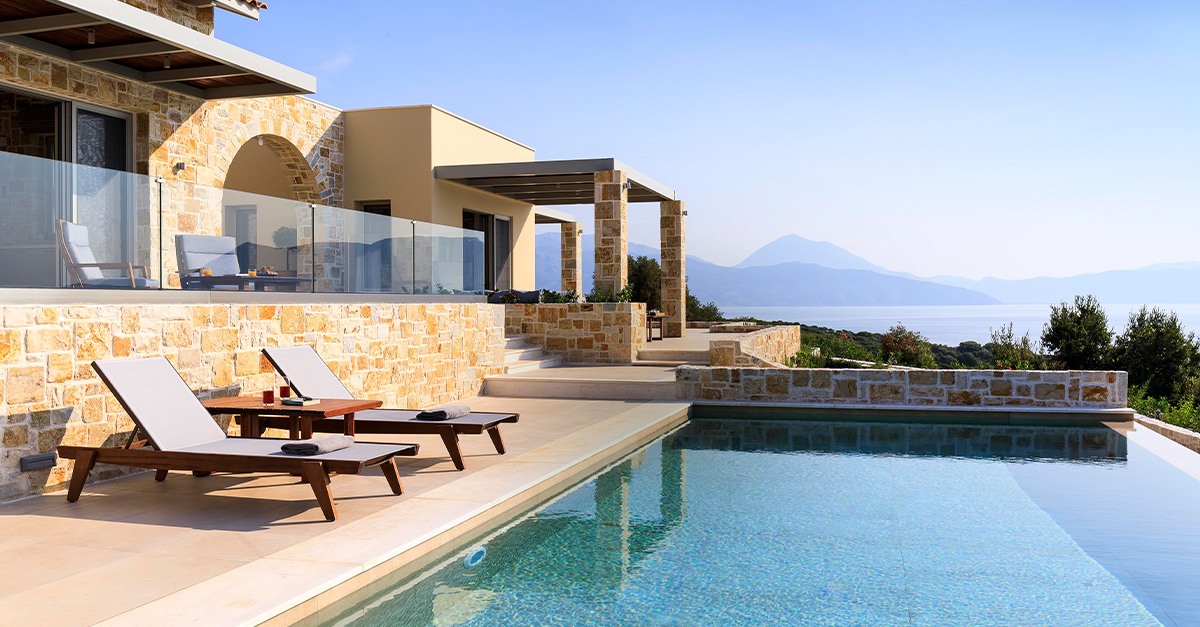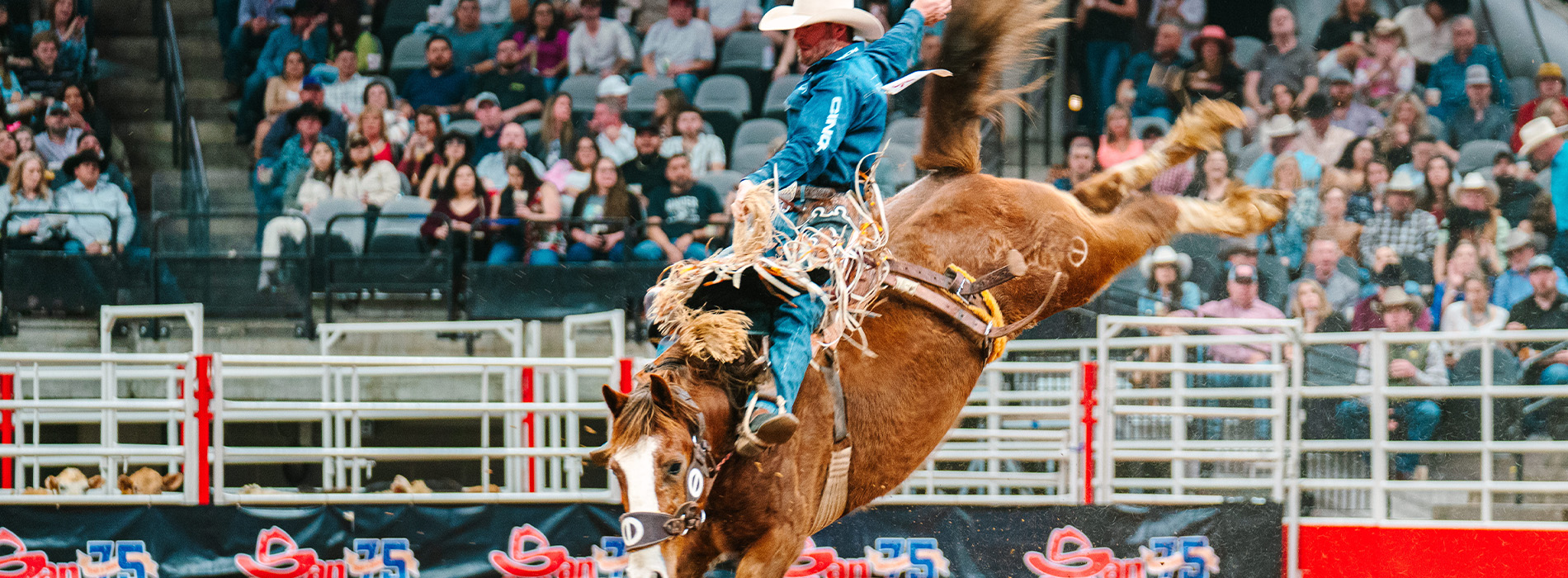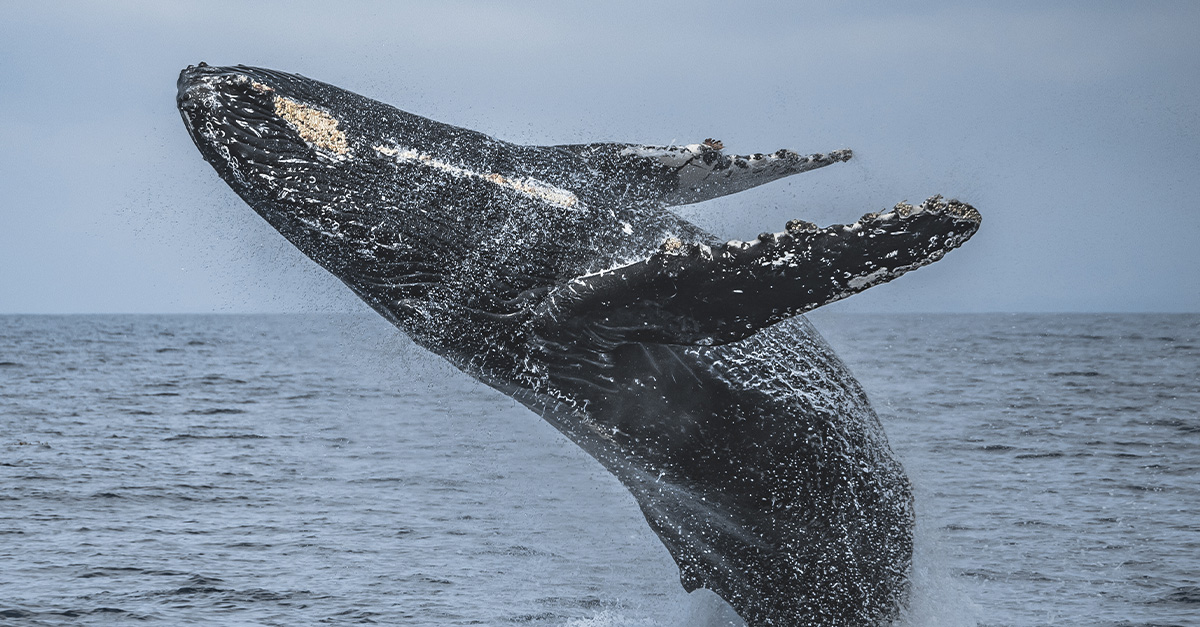Forget the beach, the real Algarve can be found along its hiking and biking trails, finds Joey Tyson.
It felt like the edge of the world, as tremendous cliffs rose up sheer from the depths, a resolute barrier against the elements, forged by the full force of the Atlantic Ocean.
Cabo Sao Vicente, Europe’s most southwesterly point, is incredibly remote. But for a huge lighthouse, the headland is bare and barren, as is the view out over the sea: miles and miles of deep blue on an endless horizon.
Actually, at one point, this very much was the end of the world. Henry the Navigator, the 15th-century explorer responsible for uncovering vast chunks of the New World and propelling Portugal into its Age of Discovery, spent much of his life in Sagres.
He might have stood on this very spot, musing about what lay beyond the shoreline.
My objectives aren’t quite as grand as Henry’s: my goal is to discover an under-visited part of the Algarve. I’m here on a three-day trip with Headwater, the self-guided holidays specialist that focuses on walking and cycling breaks, which embody the best bits of an escorted tour but can be done at the clients’ own pace.
“It’s hard to believe that Pedralva, a tiny hamlet of traditional white-washed houses, was all but abandoned a decade ago.”
The western Algarve is a far cry from the package holidays and golf resorts of the central coast. It’s wild and peaceful, with inland valleys of cork and eucalyptus surrounded by a craggy coastline of limestone cliffs and quiet sandy coves.
There’s a slower pace to things, as we see while staying at our first night’s accommodation. It’s hard to believe that Pedralva, a tiny hamlet of traditional white-washed houses, was all but abandoned a decade ago. The settlement had fallen into disrepair and dereliction. But seeing its potential, a group of entrepreneurs bought 24 of the houses and transformed them into Aldeia de Pedralva, a picturesque eco-hotel in the Costa Vicentina Parque Natural. It’s from here that our journey to the lighthouse at Cabo Sao Vicente began that morning.
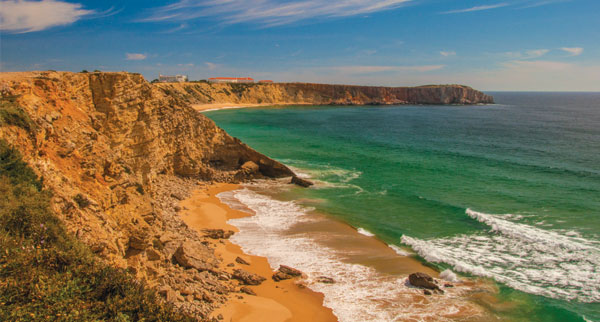
Walk on the wild side
A light dusting of frost covers the valley grass, and the first rays of the sun peep over the hills. After breakfast, we take a transfer to nearby Figueira for the start of our nine-mile trek towards Sagres. The route begins on quiet back roads, winding through farmland and small villages. Every so often we pass an old, defunct windmill, while light-pink almond blossoms and wild mimosa dot the fields around the track.
“Looking back east, it seems to go on forever, an infinite wall of pale-honey rock receding towards Faro, the gateway to the region.”
Before long, we reach Praia das Furnas, a beach deserted but for a young family who’ve spent the night here in their camper van. The first real challenge of the day comes with a steep climb up onto the clifftops, where we get our first proper views of the Algarve’s coastline. Looking back east, it seems to go on forever, an infinite wall of pale-honey rock receding towards Faro, the gateway to the region.
The headland path cuts through cluster after cluster of rock rose, an aromatic wild flower that is sticky to the touch. As we reach the cliffs above Praia do Zavial, the Sagres Peninsula stretches out before us in full. There’s a collective ‘wow’ from the group as we look over Portugal’s answer to Land’s End.
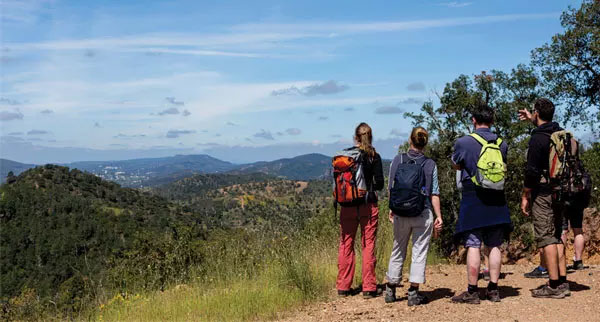
Below us at Zavial beach, a surprisingly large number of novice surfers are braving the chilly spring waters for a lesson. We see plenty more over the course of the weekend, beginners and pros alike, taking on the reliable surf of the Algarve. Surf schools are common here, particularly on the Atlantic coastline, and clients should take the time to have a go. Amado Surf Camp has multiple schools on the peninsula.
The majority of the trek sees us tracing the line of these dramatic cliffs, dropping down every now and again to explore a quiet beach. The last few miles of the walk bring us up over some scrubby fields where parched bushes dot clay-coloured earth, and a herd of sheep hang around a long-abandoned farmhouse.
“We see plenty more over the course of the weekend, beginners and pros alike, taking on the reliable surf of the Algarve.”
The last stretch into Sagres takes us over another set of vertigo‑inducing cliffs, where centuries of erosion have formed caves large enough to house a small church. Finally, we make our way down to the long sweeping beach that sits below the town.
Before sunset, we head over to Cabo Sao Vicente to watch the sun dip low on the horizon, as some ardent surfers catch their final breaks.
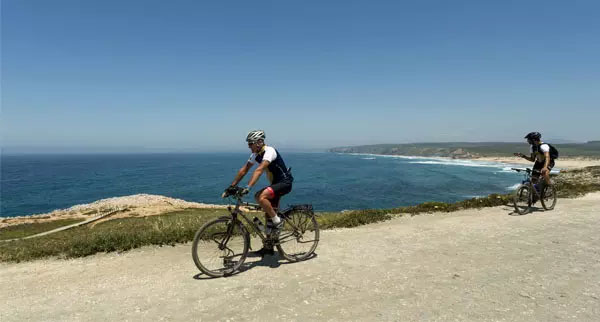
Riding east to Lagos
The next day we swap boots for wheels and test the cycling side of Headwater’s range. The first part of our ride out of Sagres is unremarkable. After a few nondescript roads, we leave town and follow a flat path to Vila do Bispo. Soon enough, we’re winding through rural backroads, passing the white-washed villages and orange groves of the traditional Algarve.
Our cycling is aided by the handy Ride with GPS app we’ve installed on our phones. It tracks our distance, clocks our average speed and, most importantly, tells us where we’re going.
It’s around 25 miles from Sagres to Lagos, our final destination, and after Vila do Bispo, we start to head east, weaving down through gentle farmland hills to the coast.
“Soon enough, we’re winding through rural backroads, passing the white-washed villages and orange groves of the traditional Algarve.”
There’s a bit of a climb before the small beach town of Salema but, like all big hills, you’ve just got to remember there’s a descent on the other side. And this one is a beauty: an exhilarating drop down to the gleaming waters of the Atlantic.
Salema has a beach of golden sand bookended, in true Algarve style, by rough limestone cliffs. We don’t hang about too long before we’re off again, pedalling up through the village’s cobbled central street.
The toughest hill on the ride stands between us and Burgau. With an 18% incline, it’s no joke, but with the promise of lunch on the other side and a rumbling stomach, I’m up there as fast as my aching legs will take me. Within the hour we arrive at Burgau, a tiny village, with a beach and a handful of wooden fishing boats.
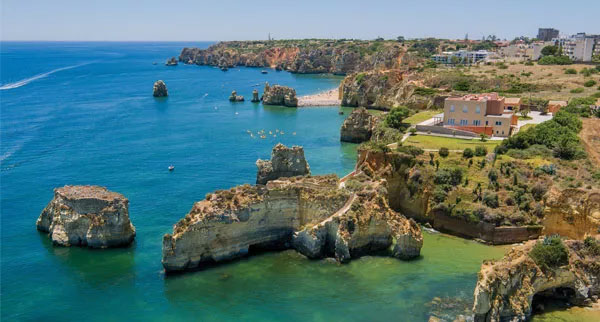
Our final stop before Lagos is Luz, a resort with a long beach and the most obvious signs of tourism we’ve seen so far. After a sweaty day in the saddle, the sea looks pretty tempting, but remembering that it’s still early in the year, I decide against a quick dip.
Lagos is really where the touristic Algarve starts again. The number of tall white apartment blocks and holiday condos start to increase as we get further in.
“After a sweaty day in the saddle, the sea looks pretty tempting, but remembering that it’s still early in the year, I decide against a quick dip.”
Compared with the deserted beaches and imposing cliffs we’ve been used to, it all seems a bit sterile. Luckily, there’s one last treat waiting at Farol da Ponta da Piedade.
By the time we reach the viewpoint, the sun is setting over Lagos and the rest of the Algarve, casting a beautiful golden light over the sandy cliffs.
Book it: A six-night self-guided walking tour starts at £819, including accommodation, hotel-to-hotel luggage transfers, breakfast and evening meals. Flight-inclusive prices start from £1,019. Departures are every two days from October 10 to May 24, 2019.
headwater.com
Read more
Hiking and biking around Saxon Switzerland National Park
Active holidays in Quinta do Lago, Portugal
History, adventure and foodie-feasts in Jersey, Channel Islands

